
ME ALONE WITH NO FRIENDS
Joe Castle Baker, 2019
SATURDAY, DECEMBER 14 – 10 PM
ONE NIGHT ONLY!

SATURDAY, DECEMBER 14 – 10 PM
ONE NIGHT ONLY!

THURSDAY, DECEMBER 19 – 7:30 PM
ONE NIGHT ONLY!
BAPHTA is a bi-monthly multimedia comedy show that celebrates legendary cinematic artists. Hosted by Andy Ward, Manning Jordan, and Tim Kov, BAPHTA is anchored by original monologues, characters, and videos inspired by the honoree’s body of work. In addition, special guests are invited to put their spin on these visionaries of the seventh art.
Our December installment will focus on an actor about to make her directorial debut in 2020, the consummate Kirsten Dunst.
Arguably one of the most versatile performers working today, Dunst has lent her talents to a variety of projects including INTERVIEW WITH THE VAMPIRE, DICK, MONA LISA SMILE, THE VIRGIN SUICIDES, BRING IT ON and MELANCHOLIA.
Join BAPHTA as we survey Dunst’s body of work and envision what the future holds for her and her upcoming adaptation of Sylvia Plath’s The Bell Jar.
Although Hollywood has been overlooking Dunst’s artistry in recent years, all eyes will be on her at this edition of BAPHTA, as we proclaim “DUNST IS CINEMA!”
Celebrate December with your favorite blonde ingenue-turned-auteur whose mischievous snaggletoothed smile has inspired a generation!
TIM KOV is a writer and performer whose work has appeared all over New York. He hosts and produces Hail Mary: Our Queer Saints, a Kennedy Center Honors-style ceremony honoring gay icons, Power Broker, a Robert Caro themed standup show, and My Little Tonys, a theater history podcast. Last summer, he completed an artist residency at Mall of Found in New Lebanon, NY, where he developed two plays, Peg and Rubbed the Wrong Way: A Prostate Play.
ANDY WARD is a Brooklyn queer comedian and writer.Andy is a recent New York transplant from Phoenix, Arizona where he hosted a monthly storytelling show “SHOW&TELL.” He hosts a monthly comedy variety show RED FLAGS. He has performed at Union Hall, Littlefield, Bellhouse, Club Cumming and has been featured in Buzzfeed.
MANNING JORDAN is a lesbian comedian/playwright. You can see her do stand up around Brooklyn, or on MNN public access network on her variety show called, HEY NOTHING. She has a monthly show at Brooklyn Comedy Collective called Monologues with Manning. As a playwright, Manning has self produced four plays, three of which were in Fringe’s FRIGID festivals for three consecutive years (2017, 2018, 2019). On July 11th her latest play, “Les Museums” premiered at Dixon Place. Her work has been shown at Dixon Place, The Kraine Theater, Manhattan Rep, Theater Under St. Marks, Vital Joint, The Footlight and more. Her short film THOSE WHO CAN’T has been named an Official Selection of the Reel 13 Short Film Contest, and her pilot SUNNY & 70 was accepted as a Fastidious Official Selection.
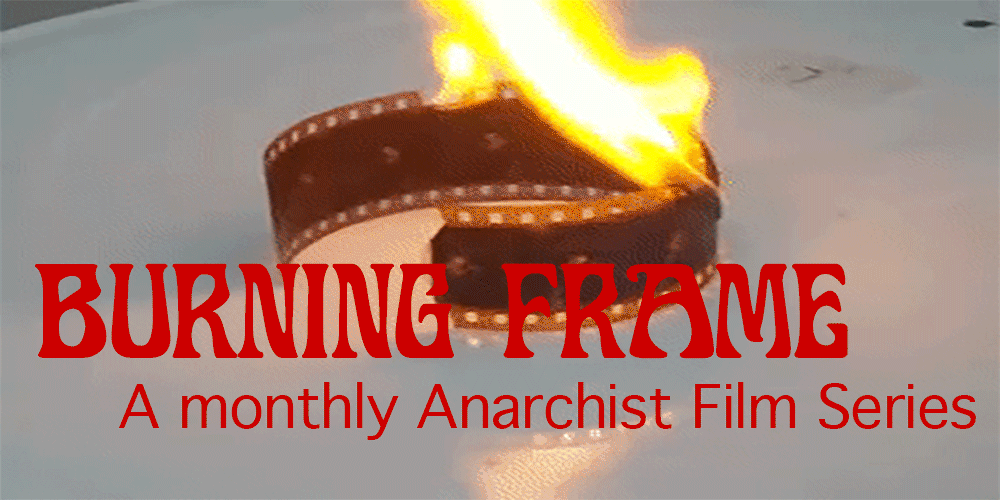
CALLING ALL LEFTISTS! The past few years have been a whirlwind: exhausting, invigorating, and ripe with potential. It’s tremendously difficult, when in the thick of it, to pause, reflect, or even find a moment to catch a breath. Especially when “it” refers to the rise of fascism on a global scale, with any number of future cataclysms hovering just over the horizon. But we digress.
Join us, then, for a series that asks: if not now, when? Come for great works of radical political filmmaking, stay for the generative discussions, or even just to gossip and gripe. The hope isthat this forum for authentic representations of successes, defeats, and the messy work of political action, will be thrilling, edifying, and maybe even inspire your next organizing project. To butcher the title of a great film for the sake of a moderately applicable pun: “Throw away your dogma, rally in the cinema.”
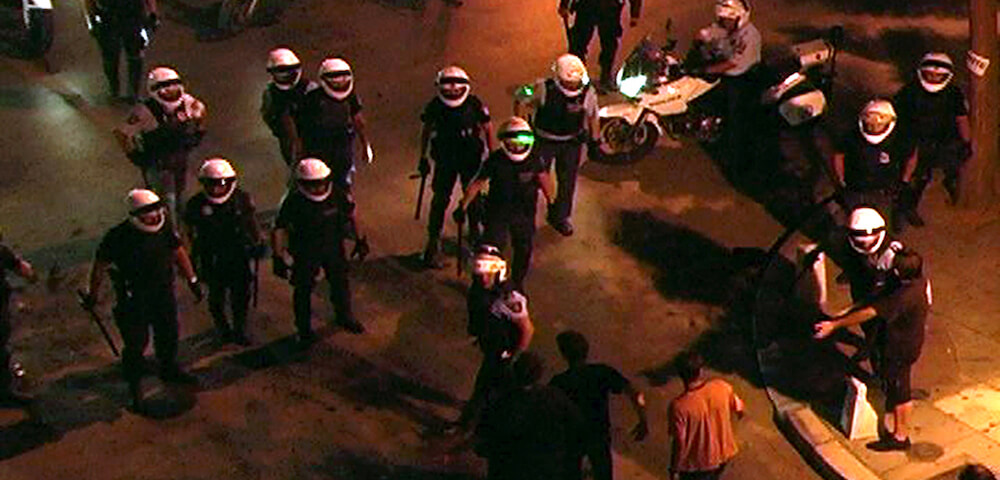
SUNDAY, DECEMBER 1 – 7:30 PM
ONE NIGHT ONLY!
A screening of short works by NYC-based anarchist video artists Sherry Millner & Ernie Larsen. Stick around for a post-screening Q&A with the filmmakers.
Shot in Paris, Athens, Thessaloniki, Barcelona, and at an anti-fascist festival in Serbia, the video essay ROCK THE CRADLE centers on the fierce aftermath of the December ’08-January ’09 insurrection in Greece, during which an unprecedented array of the excluded and the intransigent took to the streets: the fed-up, the legions of radically disillusioned youth, the unemployed and the under-employed (the precariat), autonomous unions, angry refugees, anarchists and anti-authoritarians. The video reaches a startling climax when dozens of police attack Micropolis, an anarchist social center in Thessaloniki.
HOW DO ANIMALS AND PLANTS LIVE? is a radical inquiry into the sudden eviction and demolition of the self-organized anarchist-supported migrant squat Orfanotrofeio (an abandoned orphanage) in Thessaloniki, Greece, in July 2016—under the direct orders of the Syriza government in cahoots with the Orthodox Church, the biggest landowner in Greece.
On-site testimony of a young West African migrant, first-hand exploration of revealing remnants of the bulldozed ruins of the orphanage, and performative translations from a Greek-language children’s schoolbook that the filmmakers found amid the rubble when they broke into the padlocked site pointedly coalesce to ask and answer : how is this possible?
If indeed “no one is illegal,” then this video salvages from the ruins the structure of a new commons–on the basis of such anarchist principles as self-organization, autonomy, solidarity, assembly, and direct action, at an historical moment when the status of the refugee has become a global paradigm.
Sherry Millner and Ernie Larsen co-created the interventionist video project State of Emergency, collaborating with more than 15 artists in a silent shout-out against U.S. invasions of the Middle East and the global plague of neo-liberal ideology. Together they have also produced several situationist films, including PARTIAL CRITIQUE OF SEPARATION, two anti-documentaries redefining crime, and a series of semi-autobiographical videos focusing on the authoritarian structures indispensable to capital. Millner is also an installation artist and photomonteur; Larsen a novelist and media critic; his latest nonfiction novel is The Trial Before the Trial (Autonomedia). They have co-curated many programs of short-form radical experimental media at such venues as the Oberhausen Film Festival, the Subversive Film Festival, and the Flaherty New York series. They are co-producers of Disruptive Film: Everyday Resistance to Power, more than forty films in two volumes, available (in DVD) from Facets.
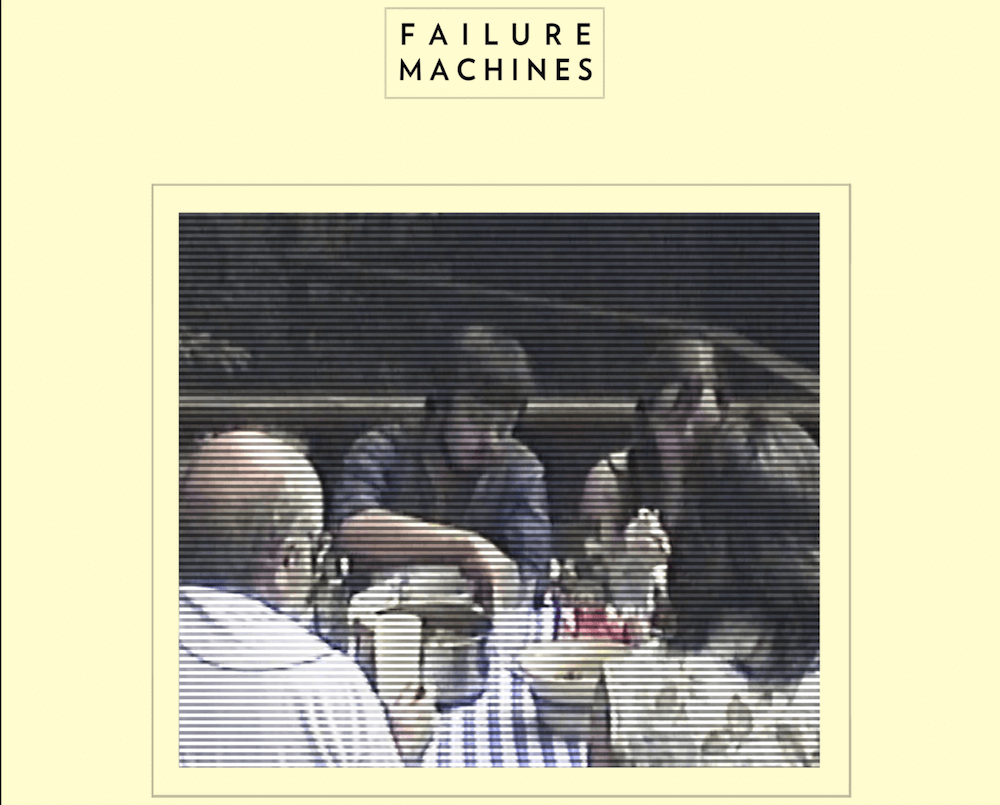
FAILURE MACHINES
Dirs. Nick Flessa, Karissa Hahn, Ilana Harris-Babou,
Ren Ebel, and Weston Lyon, 2019
58 min.
THURSDAY, DECEMBER 12 – 7:30 PM
failure machines is a collection of 5 shorts produced by 5 different directors that is touring out of Los Angeles.
FAILURE MACHINES is five films by five artists: Nick Flessa, Karissa Hahn, Ilana Harris-Babou, Ren Ebel, and Weston Lyon. The total run time of the program is 58 minutes. Its headliner is Nick Flessa’s long unavailable thesis film, IF I FORGET YOU, JERUSALEM, made during his graduate studies at Cal Arts. The film has recently been reacquired and re-mastered, and is ready to be shown for the first time. Grounded in a depiction of his former home in the East Side exurbs of Cincinnati, Ohio, Flessa’s film is a return to a land of new housing, humid overgrowth, and restless youth. Its generational hauntings and terse connections between parent and child engage a conversation around home movie aesthetics of the past, through Hi8 drenched framing and locked-off moments of lonely familial coexistence. Its characters proceed through time without immediacy but remain fixed together along a bloodline.
As a collection, the program looks to clear the boundaries of the “origin story”, a form commonly deployed for the development of character within narrative. Here, the focus is much more on a kind of technological failure. The origin story, as a concept, is tied to Nick Flessa’s return to Cincinnati, Ren Ebel’s attempts to locate a coyote in his home city, Ilana Harris-Babou’s domestic critique, Karissa Hahn’s media layering in the woods, and Weston Lyon’s journey down a river traversing the history of animation. All put forth sizable amounts of filmic play and biography. Each artist has their individual pursuits yet they all cohere along a line of recording that which escapes its beginnings. This, aided by a reverence for obsolete pictures, locates the program in a contemporary, rapidly aging moment.
History, in the form of a long and disjointed past of video technologies, is highly present in the program. It is its principle subject in ways less about a conventional origin story and more about the mechanized means of filming or representing the chosen worlds of each artist. All four artists happen to be millennials. And specific to this generation is cheap video, media distribution and home entertainment, all seemingly expanding without limit from the late part of the last century forward. This expansion, in all of its sociological crush, is taken quite literally for long sections of the program and continually calls attention to itself both in photography and script, at the surface and in performance. During key moments, the artists look to this history to catalyze sensations of perpetuity, distress, and the sublime.
All four films’ biographical leanings raise questions around disconnectedness, Saturday Morning Cartoons, matriarchy, and arguably, growing up. IF I FORGET YOU, JERUSALEM’s experiments in verisimilitude gradually sink deeper into narrative and ultimately bind together a historical moment in image making with the loss of one’s mother. The throwback camcorder positioned to quietly observe Flessa’s elegy on teenage disintegration; the soft buzz and delay of sound that predates its sources; the sitcom-like television set that never shuts off in his father’s living room…you can’t help but place the program’s concluding film in a time of neoliberal verve, where the promise of expanded middle class American life is outlived by its tools of preservation.

THE CHRYSANTHEMUM AND THE GUILLOTINE
dir. Takahisa Zeze, 2018
Japan, 189 m
In Japanese with English subtitles
SUNDAY, DECEMBER 15 – 7:30 PM
MUBI presents this explosive film from master genre director Takahisa Zeze. In wake of the social unrest caused by the 1923 Great Kanto Earthquake, two female sumo athletes, Kiku and Tokachi, and an anarchist group called the Guillotine Society, spark an unlikely connection.
Japan’s Takahisa Zeze began his career as a soft-core pinku ega director before moving into the mainstream. But he has lost neither the verve nor the edge of his early films, and only gained in ambition, as can be seen in this combo anarcho-terrorist meets female sumo wrestler historical drama!
THE CHRYSANTHEMUM AND THE GUILLOTINE is available to stream exclusively on MUBI as part of their ongoing Luminaries series. Watch here.
MUBI is a curated online cinema, streaming hand-picked award-winning, classic, and cult films from around the globe. Every day, MUBI’s film experts present a new film and you have 30 days to watch it. Whether it’s an acclaimed masterpiece, a gem fresh from the world’s greatest film festivals, or a beloved classic, there are always 30 beautiful hand-picked films to discover.
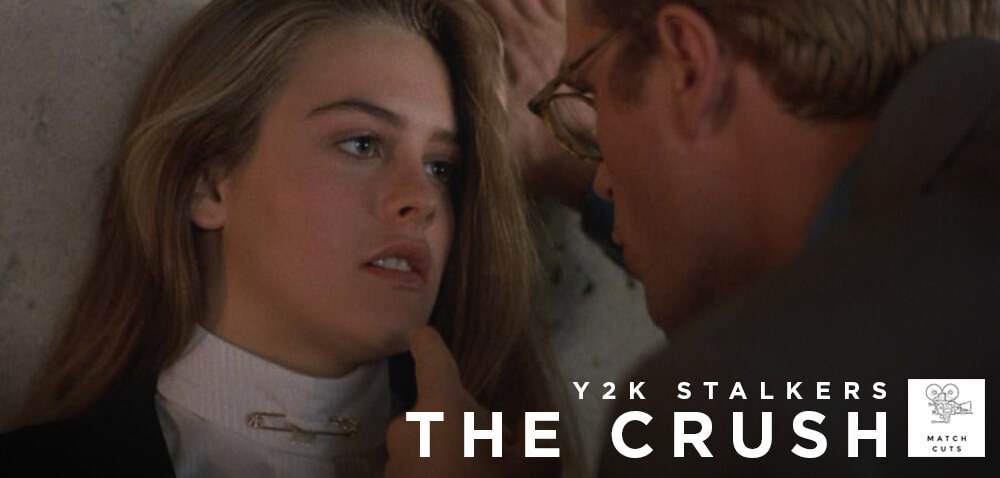
The Crush
dir. Alan Shapiro, 1993.
USA, 89 min.
English.
WEDNESDAY, DECEMBER 18 – 7:30 PM
ONE NIGHT ONLY
MATCH CUTS PRESENTS closes out the year (and their three-year [!] Spectacle run) with the last title in their Y2K STALKERS series, THE CRUSH. Presented in reverse chronological order, the series looked at, well, stalker movies before and after the year 2000 (aka Y2K). October was 2002’s SWIMFAN, followed by FEAR in November. Come also to say goodbye and congratulations to Kachine and Nick from MATCH CUTS PRESENTS!
“A journalist (Cary Elwes) becomes the unwanted center of attention for a 14-year-old girl (Alicia Silverstone), who proceeds to sabotage his life after he refuses her sexual advances.” – IMDB
MATCH CUTS PRESENTS is dedicated to presenting de-colonialized cinema, LGBTQI films, Marxist diatribes, video art, dance films, sex films, and activist documentaries with a rotating cast of presenters from all spectrums of the performing and plastic arts and surrounding humanities. Match Cuts is hosted by Nick Faust and Kachine Moore.

WARNING SHADOWS
(SCHATTEN – EINE NÄCHTLICHE HALLUZINATION)
(SHADOWS – A NOCTURNAL HALLUCINATION)
Dir. Arthur Robinson, 1923.
Germany. 85 min.
Silent
SATURDAY, DECEMBER 7 – 7:30 PM
TUESDAY, DECEMBER 17 – 7:30 PM
Arthur Robinson’s wordless meditation on jealousy and revenge pits the overzealous fantasies of “man” against “woman’s” flirtations and his friends’ distinct lack of boundaries. On the sidelines of their dinner party a lecherous servant attempts to woo an avaricious maid while the night’s band looks apprehensively on. A traveling entertainer interrupts their increasingly tense gathering for an shadow play warning of the consequences of unchecked emotions and frivolous teases. One of the primary artifacts of Weimar expressionism along with Caligari and Metropolis, Warning Shadows is less expansive in its story but just as striking in its vision.
After a 20 year hiatus, new films are finally entering the public domain. Come celebrate our newly accessible cultural heritage as we screen some of the best of 1923…

ELVES
Dir. Jeffrey Mandel, 1989
89 mins. USA.
FRIDAY, DECEMBER 13 – MIDNIGHT
FRIDAY, DECEMBER 20 – MIDNIGHT
A shot on video, extremely warped holiday classic, rescued from the bargain bins of defunct video stores, ELVES is here to improve and/or disturb your holiday season.
Dan Haggerty stars as a recently employed, alcoholic mall-Santa who discovers a Nazi-plot to breed an innocent virgin with a demonic Elf in Colorado – suffice to say this wild synopsis does not do justice to the low budget insanity contained within.

DEADLY DREAMS
Dir. Kristine Peterson, 1988
79 mins. USA.
FRIDAY, DECEMBER 6 – MIDNIGHT
SATURDAY, DECEMBER 21 – MIDNIGHT
Years later, dreams of the event begin to haunt Alex again, as strange occurrences pile up, and a beautiful mysterious stranger enters his life…
Bonkers dream sequences, clumsy performances, obvious twist(s) and a rare 80’s instance of the female-gaze (our hunky if daft Alex spends a good chunk of the movie shirtless), Deadly Dreams is a holiday treat well worth another look.
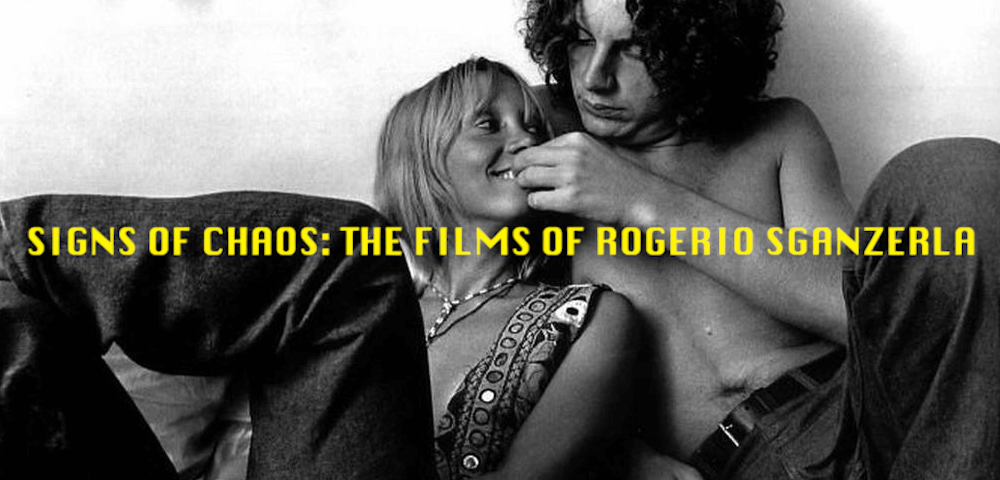
“I will never deliver clear ideas, eloquent speeches, or classically beautiful images when confronted with garbage, I will only reveal, through free sound and funereal rhythm, our own condition as ill-behaved, colonized people. Within the garbage can, one must be radical.” — Rogério Sganzerla
“Make films to occupy run down, low class theaters and be subsequently forgotten” — Rogério Sganzerla
Spectacle Theater is proud to present a near-complete retrospective of the films of Rogério Sganzerla, an independent master who challenged the institutionalized filmmaking of Brazil in the late Sixties to create a transgressive, intertextual, cinema of instability. Sganzerla’s films which were a product of the Cinema Marginal movement (which also featured filmmakers like Ozualdo Candelas, Julio Bressane, & João Callegaro) are bold, dense, radical experiments that opposed the dogmatic aesthetics of Glauber Rocha’s Cinema Novo and shifted towards a new kind of cinematic liberation, one that was rich in atonality, dialectical reflection, and fragmented deconstruction.
Described as “a kind of cinematic writing in quotations”, Sganzerla’s films employ a reflexive depth and creative intuition that is likely unparalleled. Though miscast as “The Brazilian Godard” (La Monde, 2004), Sganzerla’s sense of cinema is uniquely his own. In reference to his dialectical approach to overcome modern cinema he explains he “had to film Godard in order to get rid of Godard.” In 2010, after a retrospective of his work was held at the BAFICI, Quintin – esteemed film critic and former head of the festival – referred to Sganzerla’s work as “much more important than Godard.” Canon aside, Sganzerla’s films perhaps have more to do with the theatricality of space and Artaud’s theatre of cruelty than with anything else in the history of cinema.
Part One of this two-part retrospective begins with 1968’s O BANDIDO DA LUZ VERMELHA (THE RED LIGHT BANDIT), made by Sganzerla at the age of 22 (three years younger than Orson Welles was when he made CITIZEN KANE), and which was manifested as an assemblage of genres ranging from the American B-picture to the surrealistic and parodical experiments of post-world War II. It had a profound impact on Brazilian filmmaking and became the quintessential film of the Cinema Marginal movement (alternatively labeled as the Cinema of Invention or the Cinema Udigrúdi – Rocha’s term, used almost mockingly, to bastardize the English word “underground”), which applauded films made with low-budgets and technical imperfections. Shooting on location in the Boca do Lixo (translated literally as “Mouth of the Garbage”, in downtown São Paulo), Sganzerla exposed reality for all of its cruelties with his expansive discursive collage that was self-described as “a Western of the third world.”
Sganzerla followed up his well-received debut with 1969’s A MULHER DE TODOS (THE WOMAN OF EVERYONE), which will be featured in Part Two of the retrospective and stars Helena Ignez, his partner and muse, who plays, in the director’s own words, “the number one enemy of men.” It is an absurdist first-rate comedy that “undoubtedly reveals, without false modesty, the greatest work of a Brazilian cinema actress.”
Then in 1970, when censorship was high and the military dictatorship was getting stronger in Brazil, Sganzerla united with Julio Bressane to form Belair films in Rio. It was there that they made seven films in the span of three months. Acting as anti-cultural activists they produced three of Sganzerla’s most daring films (one of them forever lost to history, CARNAVAL NA LAMA) further blurring the line between art and reality, exploiting a caustic humor that literally explodes on the screen, breaking free from clear psychological or anthropological categorization. COPACABANA MON AMOUR (1970) and SEM ESSA ARANHA (NO WAY, SPIDER, 1970) represent cinema as the “art of the present” with a deeply rooted internal structure and logic that exists on its own defiant terms. These deconstructive masterpieces turned the camera to the Favelas, usually in a series of long takes which stimulate visual contemplation over time while actors dip in and out of frame repeating the same words over and over again until the words become meaningless or inversely create new meanings from language itself. These radical polemical works are chaotic and contradictory and reveal a political horror that is both messy and awe-inspiring in their execution.
After the disbandment of Belair, Sganzerla and Ignez traveled through Europe and North Africa, working in exile and making short experimental works, some of which were completed while others were left abandoned. It was during this time that their daughters Sinai & Djin were born, both of whom would have a profound impact on preserving Sganzerla’s archive. In fact, Sinai Sganzerla’s most recent short EXTRATOS (2019) will be presented in Part Two of the retrospective, featuring images from the short documentary FORA DO BARALHO, shot in the Sahara desert and left unfinished in 1971.
It was also in the Seventies where Sganzerla developed a deep fascination with Jimi Hendrix, who he declared “America’s number one genius”. He began filming Hendrix in 1970 at the Isle of Wight Festival and a few years later in 1977, he would dedicate an entire film to him. O ABISMO (Or ABISMU) served as a return to feature-film making for Sganzerla. It is a film about “the abyss”, or an endless search for the infinite. Fusing archetypes, spaces (both past and present), cryptograms, treasure maps, symbols, phrases, ideograms, experimental imagery, and most spectacularly, Jimi Hendrix, all coalesced into a structuralist mind-fuck that is both mythical and enigmatic.
In part two of the retrospective we will feature NEM TUDO E VERDADE (IT’S NOT ALL TRUE, 1985) – the first of four films made by Sganzerla about Orson Welles’ Pan-American trip to Brazil told through an amalgam of archival images, re-enactments, interviews, faux documentary, pastiche, and film essay. The title is a pun on Orson Welles’ unfinished film IT’S ALL TRUE, filmed during his stint in Brazil in 1941. We will show the complete tetralogy of films which includes a short-length Eisenstienian montage film A LINGUAGEM DE ORSON WELLES (THE LANGUAGE OF ORSON WELLES, 1990), the follow up feature, TUDO E BRASIL (ALL IS BRAZIL, 1998) and Sganzerla’s closing thoughts on the matter – which also marked his final film – SIGNS OF CHAOS (2003). It it is through these fascinating documents that we begin to understand not only Sganzerla’s obsession with Welles and his great experimentalism, but the harsh reality of Brazilian politics and the forces of suppression.
Lastly we will feature the short and medium-length works of Rogério Sganzerla which possess relentless experimental energy, innovative image-play, and spectacular uses of montage. These films are just as important as the features. We will be playing his debut short, DOCUMENTARIO (1966) which follows two teens who are looking to see a movie, HQ (1969), a unique collaboration with Brazilian journalist Álvaro de Moya on the history of comics, ISTO é NOEL ROSA (1980), an imaginative medium-length film devoted to the tragic samba musician Noel Rosa, PERIGO NEGRO (1992) produced with a script by Brazilian polemicist Oswald De Adrade, and a special tribute film entitled BRASIL (1981) which has João Gilberto, Caetano Veloso, Gil Gilberto, & Maria Bethania making the aforementioned record in a recording studio.
Rogério Sganzerla’s cinema is one that demands to be seen in order to be experienced.
“Those with shoes will not survive!”
Long live Brazil and long live Rogério Sganzerla’s cinema of instability.
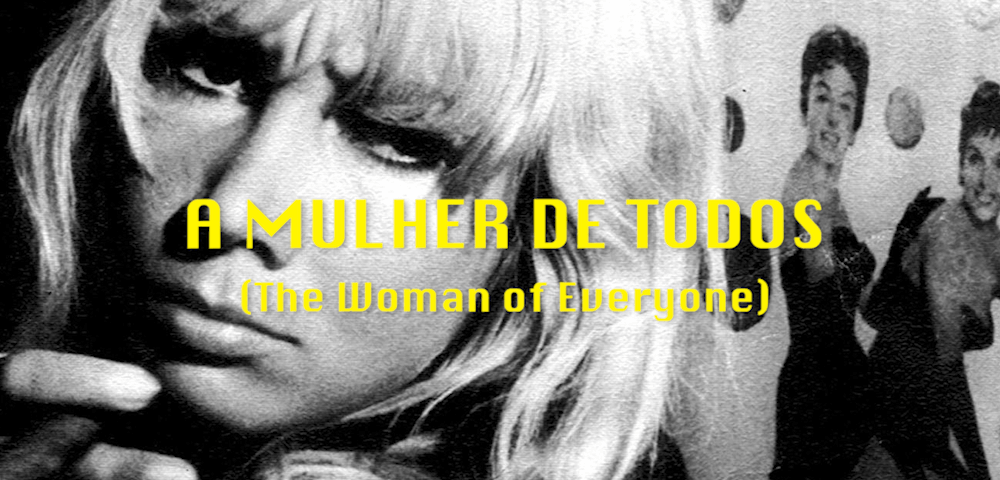
A MULHER DE TODOS
(THE WOMAN OF EVERYONE)
Dir. Rogério Sganzerla, 1969
87 mins. Brazil
In Portuguese with English subtitles.
WEDNESDAY, DECEMBER 4 – 7:30 PM
SATURDAY, DECEMBER 21 – 10 PM
SUNDAY, DECEMBER 22 – 7:30 PM
“I switched the wide-angle for a telephoto lens. My new film is a comedy inspired in slapstick, where Helena Ignez is the number one enemy of men.” – Rogério Sganzerla
Not content to allow his voice to be defined by THE RED LIGHT BANDIT, Sganzerla immediately got to filming his follow-up, something of a gender-flipped compliment to that earlier film’s manifesto of flagrancy, violence and garbage. Starring his wife and modern Brazilian cinematic icon Helena Ignez as Angela Carne e Osso (“Angela Meat and Bone”) as a hedonistic, nihilistic sex worker who has deigned herself “the #1 enemy of men.” Much of what follows after this introduction is less a discernible narrative than it is a collection of caricatures that serve as a response to both the historical suppression of the unshackled feminine cinematic image, as well as the hodgepodge of reactionary elements that construct the patriarchal mechanism of said oppression (replete with beach ball nazis!) Sganzerla’s (genuinely) anarchic sense of humor is the guiding force in these early films, and must be appreciated to grasp the political disruption his work was meant to induce. It was after seeing this film that Julio Bressane approached Sganzerla to embark on the Belair enterprise, naming it the best film he had ever seen
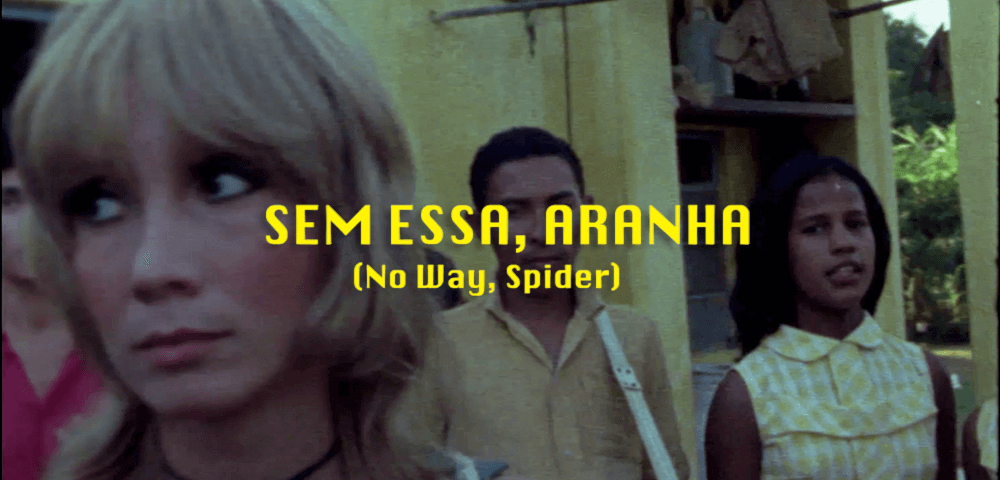
SEM ESSA, ARANHA
(NO WAY, SPIDER)
Dir. Rogério Sganzerla, 1970
96 min. Brazil
In Portuguese with English subtitles.
MONDAY, DECEMBER 2 – 10 PM
MONDAY, DECEMBER 9 – 10 PM
MONDAY, DECEMBER 16 – 7:30 PM with Q&A from film scholar Richard Peña
“In my films the actors contribute with a new style of interpretation , of disincorporation, a new technique of reinvention” – Rogério Sganzerla
“You have to sin twice for the planet not to turn upside down!”
A radical masterwork composed of unrehearsed long takes and destructive spontaneity told through a loose-narrative which follows “a banker, who lives dangerously”. It is a work of great intensity depicting beauty as vulgar and performance as self-possessed and Brechtian. Emblematic of the cinematic instability inherent to Sganzerla’s cinema, SEM ESSA, ARANHA unleashes a freer and more open perspective of space, body and language.
screening with

EXTRATOS
(EXTRACTS)
Dir. Sinai Sganzerla, 2019
7 mins. Brazil.
In Portuguese with English subtitles.
“Even though I do not believe much in my own independence, I try to put myself in a position of independence.” – Rogério Sganzerla
“It was a period of shredding hopes…”
Using archival footage filmed by Rogério Sganzerla and starring Helena Ignez, who also narrates the piece, EXTRATOS is beautiful reconstructive short film tells a story of hope during a time of exile.
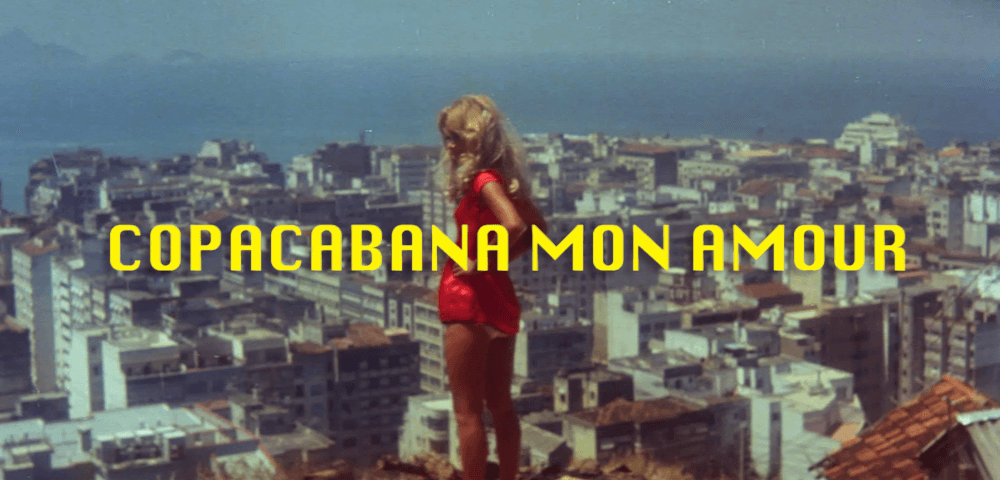
COPACABANA MON AMOUR
dir. Rogério Sganzerla, 1970
85 mins. Brazil.
In Brazilian Portuguese with English subtitles.
SATURDAY, DECEMBER 14 – MIDNIGHT
“First kill your ego then come with me.” – Rogério Sganzerla
“Hunger, Thirst, Dance.”
COPACABANA MON AMOUR follows Sonia Silk, a sex worker troubled by visions and spirits, who walks around Copacabana dreaming of being a big-time radio singer. The first Brazilian film shot in Cinemascope (or “Stranglescope”, as the film puts it), COPACABANA MON AMOUR points its lens (as if shooting the south of France in the summertime) towards the favelas of Rio where reality crumbles right before your eyes.
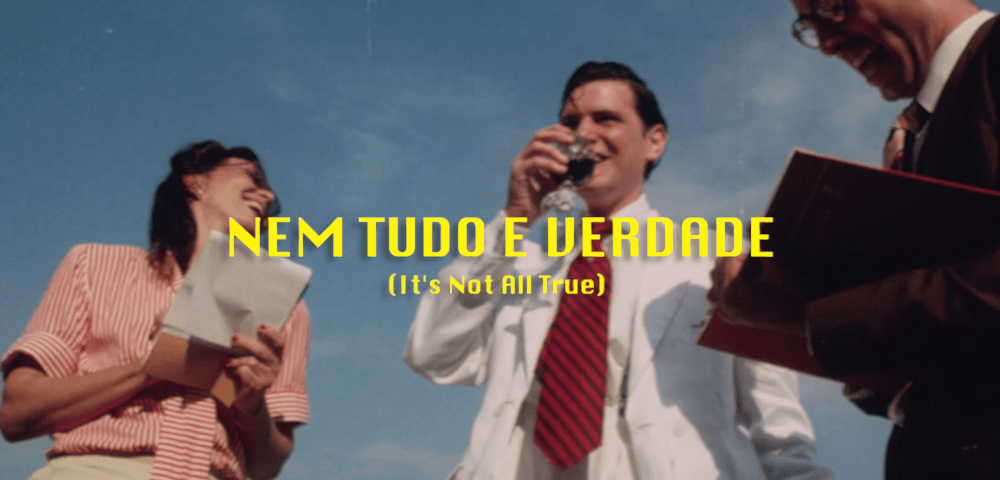
NEM TUDO E VERDADE
(IT’S NOT ALL TRUE)
Dir. Rogério Sganzerla, 1985
95 mins. Brazil
In Portuguese with English subtitles.
SUNDAY, DECEMBER 1 – 5 PM
WEDNESDAY, DECEMBER 4 – 10 PM
SATURDAY, DECEMBER 21 – 7:30 PM
“Orson Welles taught me not to separate politics from crime.” – Rogério Sganzerla
“What is false gets so close to what is true that the wise man must not walk such a dangerous cliff…”
The first of four films made about Orson Welles’ Pan-American trip to Brazil told through archival images, re-enactments, interviews, faux documentary, pastiche, and film essay. The pun of the title serves as an inverse of the Orson Welles film, “It’s All True” as well as a literal reference to its consisting of both documentary and staged reenactment. The documentary scenes feature interviews with composer Herivelto and great Brazillian actor, Grande Othelo, while the reenactments feature fascinating vignettes with Orson Welles played by Paulista rock personality Arrigo Berbabe (Who bears a striking resemblance to a young Orson Welles) and Helena Ignez as Shifra Hara. These sketches employ direct quotations from statements made by welles to the press, with the intent to evoke Welles’ vision of the “It’s All True” project, and the difficulties he encountered dealing with the Brazilian authorities.
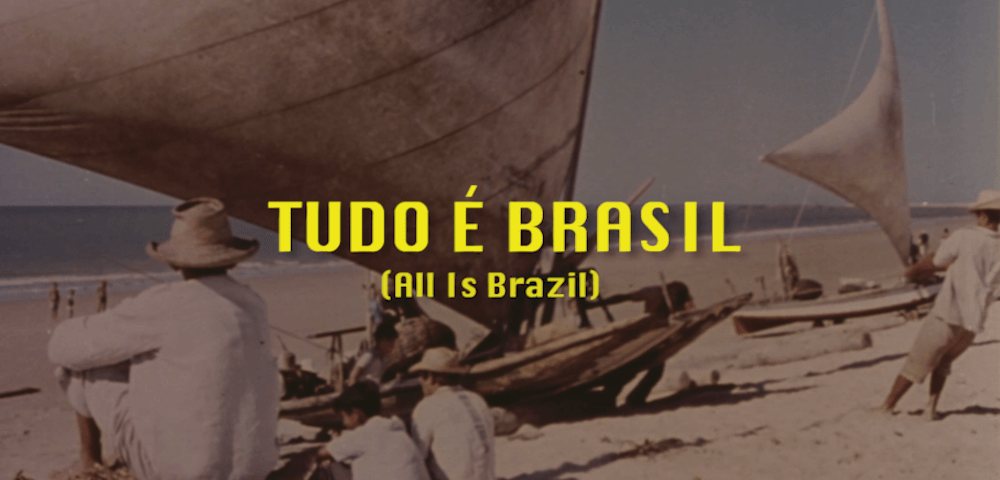
TUDO E BRASIL
(ALL IS BRAZIL)
Dir. Rogério Sganzerla, 1998
82 mins. Brazil
In Portuguese with English subtitles.
MONDAY, DECEMBER 2 – 7:30 PM
TUESDAY, DECEMBER 17 – 10 PM
FRIDAY, DECEMBER 20 – 10 PM
“He wanted perfection…”
The third entry in Sganzerla’s saga concerning Orson Welles and his trip to the southern continent, TUDO E BRASIL finds Sganzerla streamling his schizoid investigations into the historical makeup of Brazilian contemporary culture into an essay film format that at once masks the filmmaker’s direct voice, rather opting to allow his discourse to be constructed through the assemblage of found material. All the footage and audio in the film is archival, but Sganzerla’s sly techniques of juxtaposition serve to both to cleave the unassuming veneer of these repurposed images from the oppressive dynamics that define Pan-American cultural and political relationships. Sganzerla’s relationship to Brazil and its cultural production is, as always, fraught with condemnation and embrace, reflecting Brazil’s own contradictory structure. Featuring appearances from Carmen Miranda, Grande Otelo, H.G. Wells, and of course, the other Welles, TUDO E BRASIL represents the more studious Sganzerla while retaining all of the obsessive maniacal vigor that characterizes his early fiction work.
screening with
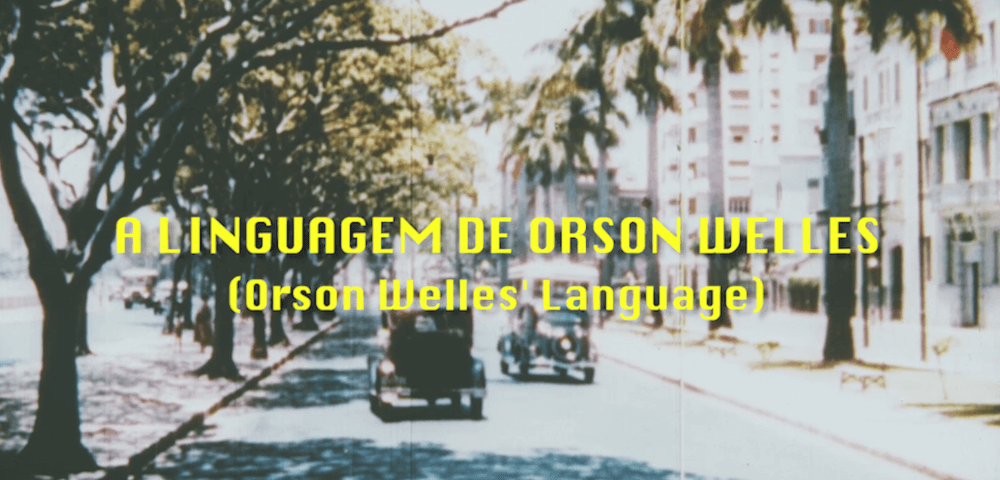
A LINGUAGEM DE ORSON WELLES
(ORSON WELLES’ LANGUAGE)
Dir. Rogério Sganzerla, 1990
16 mins. Brazil
In Portuguese with English subtitles
“In Rio, Welles began his wandering period…”
An experimental Eisensteinian montage film which functions as a breathtaking lyric poem employing an array of archival materials set to the voiceovers of Grande Othelo, filmmaker John Huston, & Orson Welles himself (via old Mercury radio plays) which slyly coalesce into a narrative filled with paranoia, corruption, and homage.
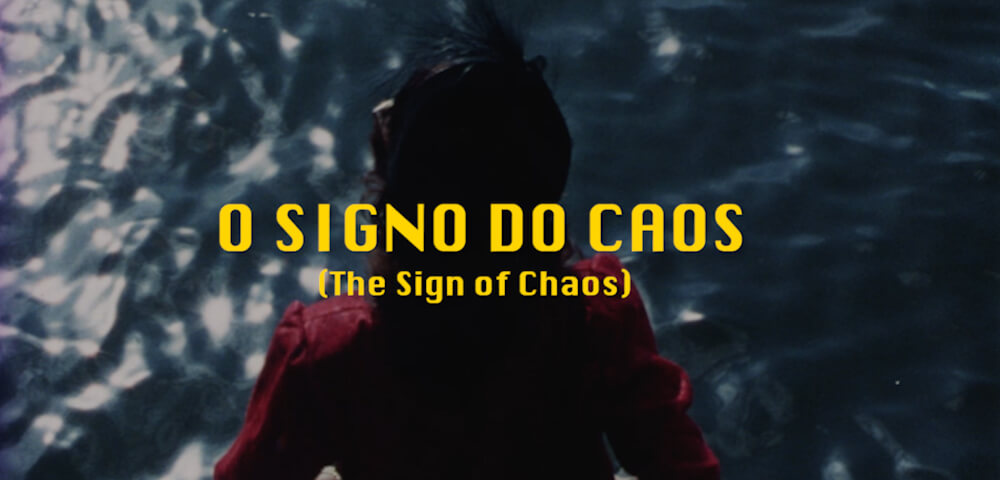 O SIGNO DO CAOS
O SIGNO DO CAOS
(THE SIGN OF CHAOS)
Dir. Rogério Sganzerla, 2003
80 mins. Brazil
In Portuguese with English subtitles.
THURSDAY, DECEMBER 5 – 10 PM
MONDAY, DECEMBER 16 – 10 PM
MONDAY, DECEMBER 23 – 7:30 PM
“The invention of a new artistic language is like a joke that has been told so many times it is no longer funny.” – Rogério Sganzerla
“A film is like a match. It only lights once.”
The Brazilian troubadour’s final outing is through and through a Sganzerla product, channeling all of the festering outrage that had suffused and defined his work during the dictatorship. One can sense a return to the historical re-enactments in NEM TUDO E VERDADE in the filming of the imagined machinations surrounding IT’S ALL TRUE, only here it is Sganzerla’s venom directed at the governmental forms of suppression and erasure that take center stage. Set to the music of Charles Mingus and shot like an experimental political thriller, O SIGNO DE CAOS portrays the censorious treatment of Orson Welles’ film while mourning the repressive power against freedom and creativity. The sensation is not unlike watching the films of Sganzerla’s udigrúdi compatriot, Jairo Ferrera, a director possessing a disdain for all proper aesthetics. The film is haunted by its Dionysian ending with reels of film burning, a fitting farewell from the Brazilian firebrand.
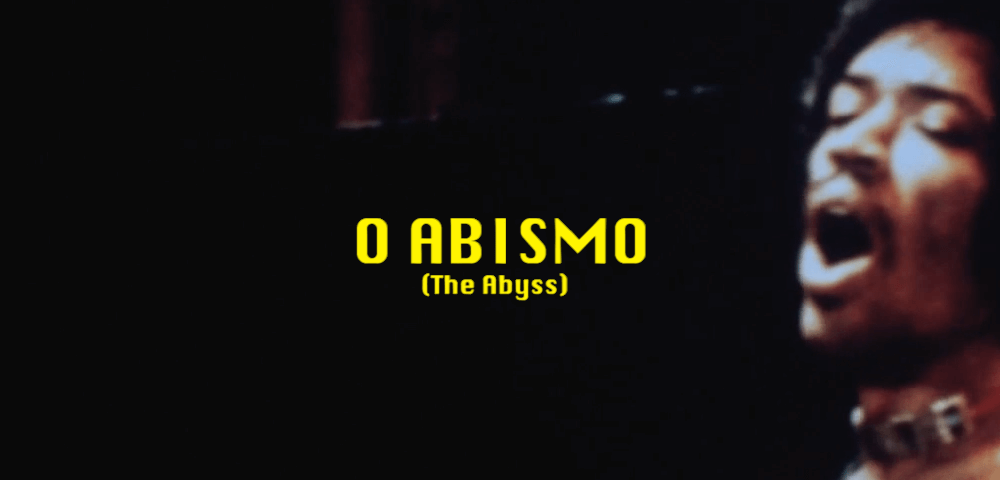
O ABISMO
(THE ABYSS)
dir. Rogério Sganzerla, 1977
80 mins. Brazil.
In Portuguese with English subtitles.
SATURDAY, DECEMBER 7 – MIDNIGHT
“Jimi Hendrix is a thinker and to him I dedicate all my travelings, panoramic and fixed plans. With him I discovered the need to say everything at once no matter what.” – Rogério Sganzerla
“What I wanted was to destroy my ego…”
O ABISIMO is a sensory mind-trip that forges a dialog between the music of Jimi Hendrix, the land of Fusangs, the power of MU, and the story of an Egyptologist, who is searching for an ancient emblem while being pursued by a woman named Madame Zero (Norma Bengell). The film also features director José Mojica Marins as the professor, Ze Bonitinho as some-sort of deconstructive archetype, Edison Machado (Bossa Nova legend) as a drummer who plays loud and intermittently, & Wilson Gray – who shoots a gun in the middle of nowhere while making references to Edgar Allen Poe. O ABISIMU is possibly Sganzerla’s freest film.
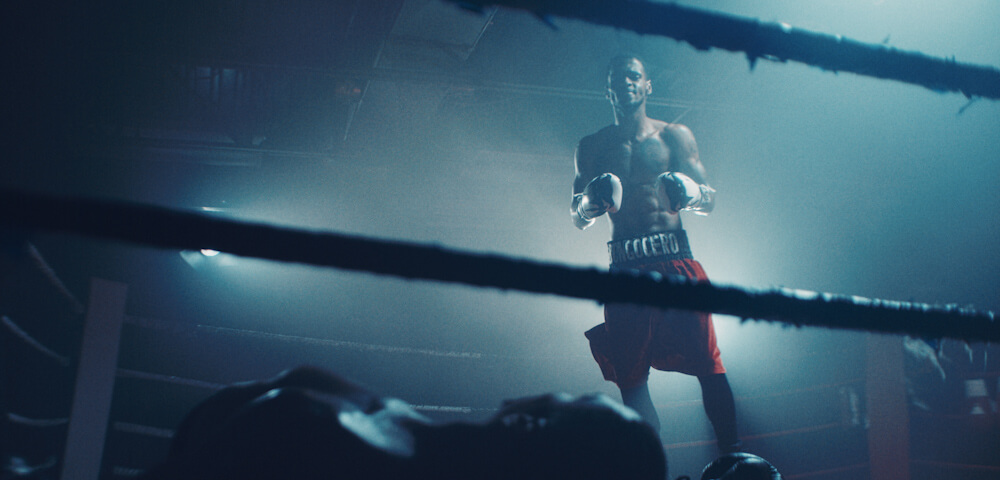
WEDNESDAY, DECEMBER 11 – 7:30 PM
With filmmaker Brian Chu in conversation with Wesley “El Bongocero” Ferrer and Council Member Antonio Reynoso.
For ONE NIGHT ONLY, Spectacle is thrilled to host local filmmaker Brian Chu for a screening of his short documentary THE B-SIDE FIGHTER, alongside other works made within (and about) the neighborhood our theater calls home, the South Side of Williamsburg. Following the shorts program, Chu and his collaborator/subject Wesley “El Bongocero” Ferrer will hold a discussion with Antonio Reynoso, Council Member the 34th District.
THE B-SIDE FIGHTER
dir. Brian Chu, 2019
15 mins. United States.
In English, and Spanish with English subtitles.
The south side of Williamsburg (Brooklyn, NY) a neighborhood built on industry and hustle. From these streets emerges a young boxer named Wesley Ferrer, AKA “El Bongocero” because of his rhythmic punching style. Wesley was originally born in the Dominican Republic and moved to Brooklyn when he was a teenager. When his father Mateo took him to the boxing gym one day, he immediately saw his potential for greatness.
Wesley quickly worked his way through the amateurs and won the prestigious Golden Gloves tournament which started his professional boxing career. Alongside his father Mateo, who became his trainer, they held an undefeated record of 12-0 and continued to chase their dream of becoming a champion.
It’s been over a year since their last fight and this inactivity is tough on a boxer. Stuck in the politics of boxing, all they can do is continue to train and patiently wait for their next fight. Balancing the life of a professional athlete and being a kid living in Brooklyn pushes Wesley and Mateo to the edge of giving it all up. All they want is a chance to prove themselves in the ring.
This event is a collaboration with UnionDocs, WEREHAUS and the office of City Council Member Antonio Reynoso.